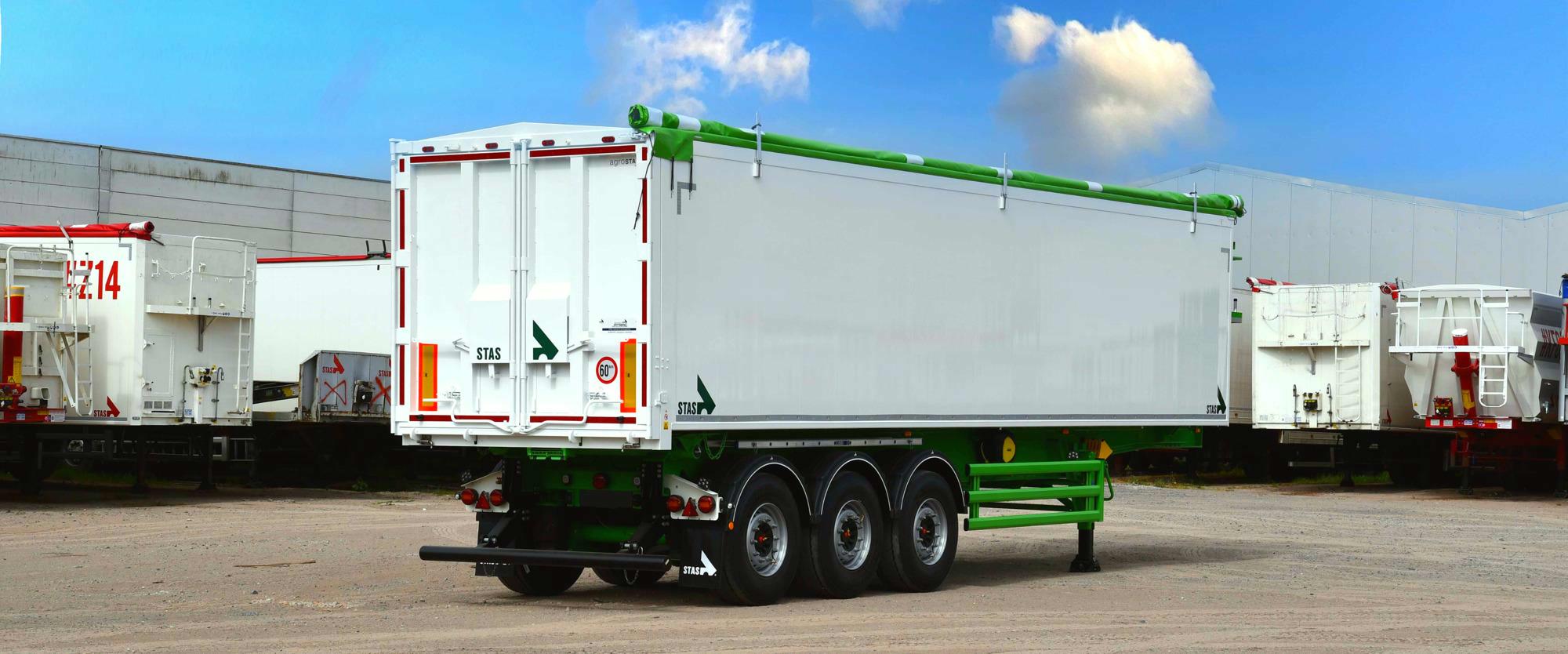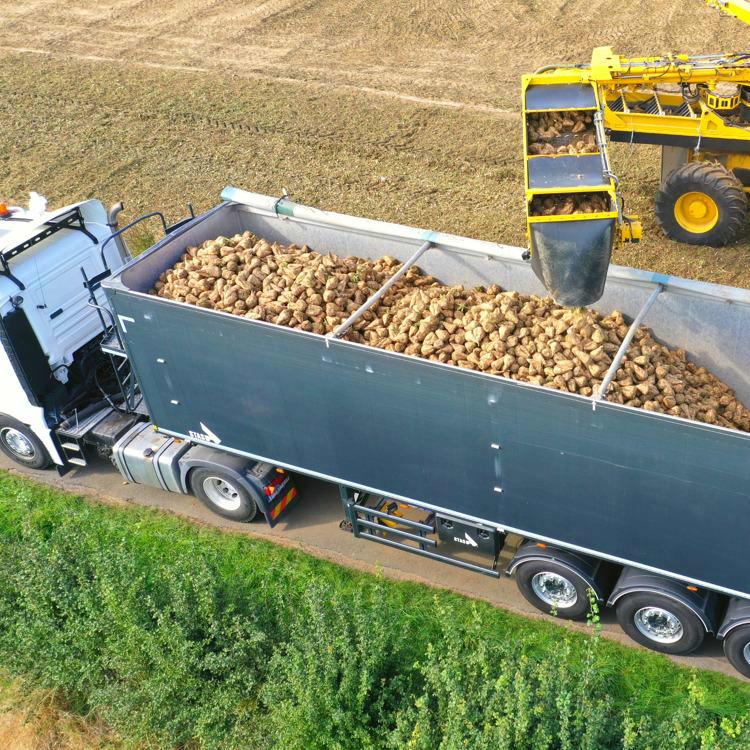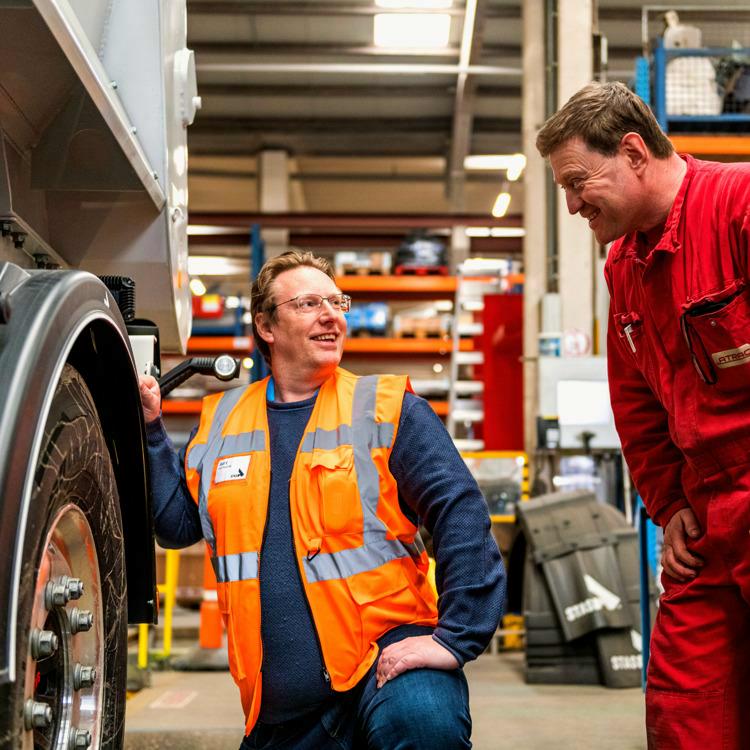Wear & damage: check your tyres

Checking the trailer tyres can go a long way to driving economically with your tipper or walking floor trailer and thus use less fuel. By doing regular visual checks, looking at the tyre pressure, and keeping an eye on wear patterns, you can save quite a lot on an annual basis. The driver is more at ease because he is sure that he’s safe on the road and downtime is minimised.
About 3/4th of truckers currently drive with at least one tyre that is underinflated. And that has consequences. Among other things, it is less safe for the driver but it also consumes extra fuel. Underinflated tyres lead to uneven wear and more rolling resistance. The total sum of these disadvantages is even greater than the sum of the parts because everything affects each other.
But how do you effectively check the condition of your tyres? There are 3 ways, 2 of which are purely visual, to check the condition of your trailer tyres:
1. Visual check
If there is damage to the tyre, in most cases you can see it with the naked eye. Walk around the truck and trailer regularly and inspect the tyres to see if there is any visible damage such as cracks, nicks, bulges or bumps. Be sure to check the rims and valves as well. Underneath the vehicle, you can check the inside of the tyres for damage. If you do this on a regular basis, you will notice serious damage quickly and early action can be taken.
A typical wear phenomenon on semi-trailers that have been in use for more than eight years are dry tears. You can base this on the production date of the tyre which is incorporated in the number often, but not always, on the sidewall of the tyre. The last four digits of the DOT number represent the week and year of the tyre's production.

2. Wear patterns
A second way to visually check your tyres’ condition is by analysing the wear patterns on the tyres. The kind of wear you see can tell you a lot more about your tyre pressure. For example, if you have more wear on the outside of the tyres, there may be a problem with axle alignment. If the central part of the tyres is more worn, then the tyres may have been over-inflated.

Tread depth is a great indicator to know about tyre wear. You can measure it with a tread gauge or a caliper or compare it to the wear indicators on the tyre. Does the profile height match the wear indicators? Then your tyres need replacing!
When measuring tread depth: make sure you do this thoroughly. Measure the depth on the outside, in the centre and on the inside of the tyre and do this 4 times per tyre every 90°. This will ensure that the entire tread, or contact surface of the tyre, wears down evenly. That way, you can detect uneven wear early on. Worn or broken bearings or seized brakes are often the cause of this. If so, be sure to visit your local STAS dealer.
Two tyres on the same axle should show identical wear patterns. Do not compare the axles with each other because, thanks to the lifting axles, they can show different degrees of wear. For example, the middle axle will always show the most wear because it can never be lifted.

When you give your vehicle a polish, be sure to polish the tyres and valve as well. If you see bubbles appearing, you might have a puncture. An invisible defect at the valve can be easily detected this way.
3. Check tyre pressure
A more accurate way to measure tyre pressure is to use a tyre pressure gauge. This technique ensures that you can detect invisible leaks.
But how do you know what the right tyre pressure is for your vehicle? First of all, you need to know what activities you will perform with the trailer - this will have a big impact on the necessary tyre pressure. With a STAS trailer, you are in luck, because the ideal tyre pressure is stated on the tyre itself as well as on a sticker on the trailer. On a walking floor trailer, this is just above the center wheel on the lower edge of the body, while on a tipper trailer you will find the ideal tyre pressure on the chassis at the level of the center wheel.

Be sure to check out the blog post TPMS and TPRS systems: how to keep your trailer tyres in top condition for more info. Since July 2022, every trailer will be supplied with some form of TPMS as standard.





